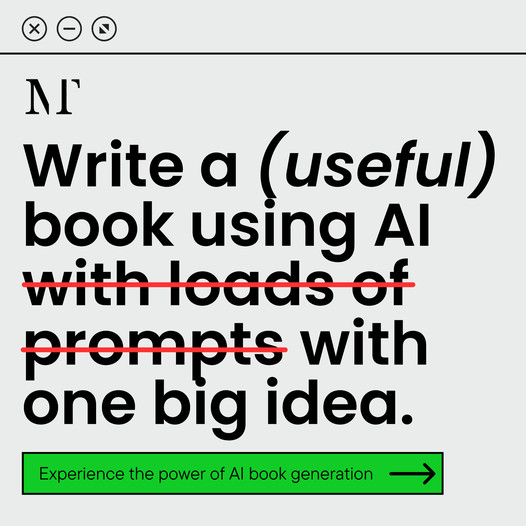Understanding Children’s Literature
Writing for kids can be a fun adventure! Getting the hang of what makes children’s stories tick is super important if you want to succeed as an author in this field.
Importance of Children’s Books
Children’s books are like magic keys to a kid’s world. They open up ideas of empathy, friendship, and curiosity. Through reading, little ones are nudged to dream big and think creatively, which helps their minds grow. As a writer, you can leave a lasting mark on tomorrow’s leaders through the tales you spin.
Key Elements of Children’s Books
Nailing down certain components is key to crafting stories kids love. Here’s a handy list of what to keep in mind:
| Element | Description |
|---|---|
| Simple Language | Stick to words they can wrap their heads around easily. |
| Vivid Imagery | Paint bright and lively pictures with your words. |
| Engaging Characters | Create heroes and villains that kids would cheer for or want to emulate. |
| Clear Plot Structure | Ensure it’s got a straight-forward start, middle, & finish. |
| Themes and Messages | Slide in lessons or morals that hit home with young readers. |
Age-Appropriate Content
Figuring out who you’re writing for is vital. The story should fit the age so kids get and enjoy it. Check out the table for a quick peek at what different age groups dig:
| Age Group | Characteristics |
|---|---|
| Toddlers (0-2) | Short catchphrases, catchy rhymes, bright pics. |
| Preschoolers (3-5) | Simple plots, catchy repeats, funny bits. |
| Early Readers (6-8) | Slightly complex folks, simple chapter books, basic challenges. |
| Middle Grade (9-12) | Heavier themes, layered characters, multiple storylines. |
Keeping these tips in mind helps you steer through writing books for kids like a pro. Want more insights? Check out our tips for writing children’s books or dive into inspiring writing prompts for beginners.
Tips for Crafting Children’s Stories
When you’re working on stories for kids, grab their attention with techniques that’ll keep them hooked. Here’s how you can make your storytelling, characters, and themes a hit with the younger crowd.
Engaging Storytelling Techniques
Kids love stories that set their imagination on fire. Try these ways to keep ’em turning pages:
- Use Repetition: Kids dig it when they hear the same catchy lines again and again. They love patterns like this—just like a favorite song on repeat.
- Interactive Fun: Get those mini brains going with questions or little tasks they can do while reading. It makes the whole experience way more fun!
- Colorful Imagery: Paint a picture with words about the places and people in your story. Kids love to see what you’re describing in their mind’s eye.
- Suspenseful Twists: Throw in some surprises or puzzles. This way, kids are always itching to know what comes next.
| Technique | Description |
|---|---|
| Use Repetition | Catchy phrases that stick out. |
| Interactive Fun | Get readers joining in on the action. |
| Colorful Imagery | Draw vivid pictures with words. |
| Suspenseful Twists | Keep ’em guessing and wondering. |
Developing Memorable Characters
Crafting characters that shine for kids means making them stand out and stick around in their thoughts. Here’s how:
- Relatable Features: Think about aspects like courage, kindness, or plain ol’ curiosity that kids see in themselves.
- Distinct Personalities: Give each character a little quirk or whimsy. Maybe they never go anywhere without their toy or have a wild imagination.
- Change and Growth: Let your characters grow or evolve—teaches kids important stuff like meeting challenges and growing up.
For more insight on character-making, swing by our article on how to develop characters in a story.
Incorporating Themes and Messages
Kids’ stories often teach through their tales. Check out these ways to weave in meaningful messages:
 What Poetry Feels Like
What Poetry Feels Like- Life Lessons: Slip in teachings on being kind, honest, or never giving up within the storyline.
- Diverse Perspectives: Show kids a world full of different folks and places to broaden their horizons.
- Nature and Care: Get young readers thinking about caring for our planet through tales of nature and responsibility.
| Theme | Description |
|---|---|
| Life Lessons | Weave values into the tale’s moral. |
| Diverse Perspectives | Include all sorts of characters and places. |
| Nature and Care | Promote eco-friendly thinking and action. |
Try these ideas to pump some life into your next children’s book. For more tips on fine-tuning your writing, check out our article on how to improve writing skills.
Writing Style and Language
Writing for kids isn’t just jotting down words—it’s an adventure in balancing fun with learning. Let’s break down some tips that will help you craft tales that grip little hearts and minds.
Easy Words, Big Impact
When writing for kids, simplicity is your best buddy. They won’t appreciate a dictionary workout. Stick with words they can easily grasp. Craft stories their imaginations can follow, bringing them joy while also giving ’em something to learn.
| Age Group | Word Choices They’ll Love |
|---|---|
| Toddlers (0-3 years) | Simple words (1 or 2 syllables) |
| Preschool (4-5 years) | Basic, everyday phrases |
| Early Elementary (6-8 years) | Short sentences with well-known words |
| Middle Grade (9-12 years) | Challenge them (a little) with new but friendly words |
Fun and Colorful Stories
Make them feel they’re part of your story. Add questions or prompts to make their brains tick—connect those words to their world. Descriptive language should spark vivid mental pics, making your tale a mini-movie in their minds.
- Engage with Questions: Sprinkle in questions like “What do you think comes next?” to keep them curious.
- Paint a Picture: Use words that pop, like “The sunshine sprinkled gold over the meadow.”
Laughter and Flights of Fancy
Tickle their funny bone and take them on wild rides with their imagination. Fill your books with quirky personalities and hilarious moments. Surprise them; they’ll love it.
- Sprinkle in Humor: Add funny word tricks or zany character traits.
- Imagination Fun: Yet-to-be-explored worlds that invite the kiddos to think up what’s next.
Bringing these elements into your children’s stories makes them both enjoyable and impactful. Ready for more tips? Check out our piece on how to improve writing skills to keep honing your craft.
Illustrations and Design
Let’s talk about the magic pictures bring to kids’ books. They’re not just extras on the page, they’re the real thing that makes a child’s imagination take flight. Getting visuals right is like sprinkling fairy dust over your story—bringing it to life in a way words alone can’t.
The Role of Illustrations
Think of illustrations as storytellers themselves. They fill in any blanks, setting scenes, and painting characters so vividly that kids feel like they’re right there with them. Pictures tickle imaginations and can turn read-time into a first-class adventure.
| What Pictures Do | Why It Matters |
|---|---|
| Visual Storytelling | Works with the words to paint a clearer picture in a child’s mind. |
| Getting Kids Hooked | Keeps them turning pages and diving deeper into the book. |
| Making it Personal | Stirs up emotions that words might not fully grasp. |
Finding the Right Illustrators
Scoring an ace with your illustrator is like finding the peanut butter to your jelly—it just clicks. Here’s your cheat sheet for picking a partner in this visual venture:
- Portfolio Peek: Their art style should vibe with your story’s spirit.
- Kid Lit Cred: Look for folks who’ve been there and done that with children’s books.
- Team Player: You’ll want someone you can bounce ideas off and whose vision syncs with yours.
Got a list of potentials? Check out their art—who’s speaking your language? Hit up social circles of writers and illustrators online to bag the best match.
Integrating Text and Images
Nailing how words and pictures dance together on a page is key. Here’s how to keep that flow smooth:
- Layout Love: Plan where everything goes before glue hits paper. The right layout keeps things easy to read and eye-catching.
- It’s all in the Purpose: Each picture should pull its weight—clarifying parts of the story and adding the cherry on top.
- Keep the Look: Stick to a steady style throughout so it feels like one grand journey from cover to cover.
| Killer Combos | Why They Work |
|---|---|
| Plan it Out | Blocks text and illustrations for ultimate readability. |
| Art with Intent | Makes the story richer, not just fancier. |
| Look Consistent | Keeps kids on a steady, enjoyable path. |
By hitting the sweet spot with illustrations, picking the right partners, and letting text and images sing together, your children’s book will capture the hearts (and imaginations) of young readers. Want more advice on writing? Check out our article on upgrading your writing game here.
Navigating Publishing and Marketing
So, your children’s book is finally polished like a diamond and waiting to see the light of day. The next big leap is getting it out there, into the tiny hands of those eager young readers. Here’s what you really need to know without all the jargon.
Researching Children’s Book Publishers
The hunt for the right publisher can feel a bit like dating. You’re looking for a publisher that’s got a soft spot for kids’ books. Kick off your quest by making a good ol’ list of publishers that vibe with your book’s genre, age level, and themes. Don’t forget to check out their submission guidelines—they’ll specify what they’re into, like word count, how they want your manuscript formatted, and if they even peek at unsolicited submissions.
| Type of Publisher | Examples |
|---|---|
| The Big Fish | Scholastic, Penguin Random House |
| Indie Darlings | Candlewick Press, Chronicle Books |
| DIY Style | CreateSpace, IngramSpark |
Peek at their latest work to get a sense of their style and ideal readers. Hit up book fairs and other literary shindigs, shake hands, and chat with the pros—it’s a goldmine for understanding what’s up in publishing today.
The Submission Process
Found a publisher that feels like a match? Time to whip together your submission package. Most of ‘em want a query letter, a book synopsis, and perhaps a few chapters of your manuscript. Stick to their unique guidelines like glue to ensure your package isn’t tossed aside.
Your query letter is your foot in the door, the difference between landing in the ‘consider’ pile or the recycling bin. Here’s what you need in there:
- A quick hello and who you are
- A catchy peek into your book
- Who’s gonna love your book
- Your bragging rights (any relevant experience or credentials)
Our handy guide on how to write a killer query letter has all the juicy details.
Promoting Your Children’s Book
Promotion is where you roll up your sleeves and put on the marketer’s hat. A solid plan is gonna help sell those copies! Start by:
- Launching an author website
- Busting moves on social media
- Reading your work at local events
- Teaming up with schools and libraries
You could sweeten things with free giveaways or even some cozy virtual readings. Never underestimate the power of a great word-of-mouth buzz—it can make all the difference. To keep your promo strong, check our writing advice for aspiring authors for more insider tips on sprucing up your marketing game.
Grasp the ropes of the publishing ride and give your marketing efforts some oomph, and your children’s book could be the next big hit!

 Grab my poetry book, 'we're all just wanderers in the end' Here
Grab my poetry book, 'we're all just wanderers in the end' Here AD: Your Book Finally Written...
AD: Your Book Finally Written...